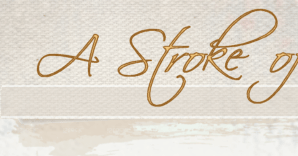 |
 02-26-2005, 10:34 AM
02-26-2005, 10:34 AM
|
#1
|
|
Inactive
Joined: Jan 2002
Location: Siloam Springs, AR
Posts: 911
|
Palette successes
The key to a good palette is being able to use the colors on it. Good palettes are like good baseball bats;they are only good if one knows how to use them. As a teacher I will go around a room of 24 students and every time I sit down I am seeing a new mixture of colors, placed in new places with differing brands and qualities of paint. Even the brushes are different. This matters not.
Cooks do not discuss how to cook with only 7 food items. More is better, but knowing how to cook is the best way to be successful. Artists can try every artist's palette ever and fail or succeed purely according to their knowledge and skill.
To continue with the cooking analogy, recipes are good points of departure. Master chefs in restaurants do not have their noses in cook books. They have written the recipes on their hearts. They have come to understand the strengths and characteristics of the many choices. They alter these to their own preferences to achieve the effect they desire for that particular result. Painters must come to this place to. Palette formulas are the artist's recipes. A good place to start and move from.
Additionally, painters like chefs, should understand the benefits of all colors (tastes). To flat deny a painter any and all color choices is the same as denying a chef certain ingredients. A skilled chef might make do but having the full range of options would be better.
But place an unskilled cook in the best kitchen in the world and without knowledge, the results will be unimpressive.
|
|
|

|
 02-26-2005, 07:18 PM
02-26-2005, 07:18 PM
|
#2
|
|
Inactive
Joined: Jan 2002
Location: Siloam Springs, AR
Posts: 911
|
Glass
Here's my glass top taboret. It's 1/2" thick and is big enough for any large project. I now have one from Best that works very nicely for small projects.
|
|
|

|
 02-26-2005, 07:30 PM
02-26-2005, 07:30 PM
|
#3
|
|
Juried Member
Joined: Dec 2004
Location: Scottsdale, AZ
Posts: 388
|
Tim,
You are on the mark. I studied under Daniel Greene who taught us to use a system of mixed colors on the palette. In fact I encourage everyone to at least study Greene's palette. It will be instructive. While I don't use the same exact colors as Greene, I do follow the system closely. I find that I can complete about 95% of all my portraits with just the colors already mixed on my palette. The remaining 5% are colors that may require a special mix.
To mix the colors on the palette requires 15 or 20 minutes at the start of each day, but the time is more than made up with the ease in which the right color can be selected and applied. I remember the time,which was the last afternoon of my sessions with Daniel, that I only had 3 hours to apply color to the portrait I was working on. The drafting was fully completed, but no color had been applied. Working like a mad man I completed the portait in the three hours. I think my brush was on fire at the end of the session because of the speed I was applying paint. It was a great lesson in the power of an organized palette system. By the way, I considered the portrait finished after that session and sold it three months later.
|
|
|

|
 02-26-2005, 08:04 PM
02-26-2005, 08:04 PM
|
#4
|
|
Inactive
Joined: Jan 2002
Location: Siloam Springs, AR
Posts: 911
|
Plein aire
Richard, good news on your portrait. The plein aire guys you may know out there do the same thing. They will mix and mix the colors in front of them and rush them onto the canvas before the sun/shade moves.
PS. Chris, I meant for the last 'thread" to be a continuation of this one. Can you help? I don't think I can transfer it to here. Thanks Tim
|
|
|

|
|
Currently Active Users Viewing this Topic: 1 (0 members and 1 guests)
|
|
|
 Posting Rules
Posting Rules
|
You may not post new threads
You may not post replies
You may not post attachments
You may not edit your posts
HTML code is Off
|
|
|
|
|
|
All times are GMT -4. The time now is 05:19 PM.
|

